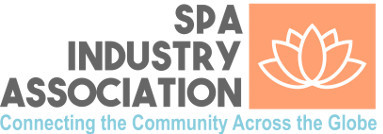
In an age where people are increasingly looking for alternatives to traditional medical and wellness approaches, the health and wellness industry is thriving – with the sector forecasted to reach nearly USD$7 trillion globally by 2025. These alternatives have opened the general public’s minds to new possibilities and potential benefits. Applied kinesiology and muscle testing embrace those possibilities.
Muscle testing acknowledges that people’s conscious minds are very limited, while believing that a greater part of their brain power lies within the subconscious mind. The practice is designed to bring subconscious information into conscious awareness in order to affect different areas of a person’s life.
This article discusses the basics of muscle testing, what the concept is built on, what it supposedly does, how it’s said to work, and how it can potentially improve your overall wellbeing.
What Is Muscle Testing?
Stemming from the convergence of concepts and beliefs like kinesiology and traditional Chinese medicine, muscle testing is a method of gathering biofeedback from the body’s physical and mental states by stimulating the muscle system.
At the core of muscle testing is the belief that the body can communicate, relay information, and answer questions. Muscle testing likens the subconscious mind to a human computer with the ability to archive every experience a person has.
This life record includes everything – every beautiful experience, every painful moment, every emotion, and everything the senses have ever perceived. Essentially, practitioners of applied kinesiology and muscle testing believe that the entire history of every human cell is stored in the subconscious mind and that the muscles can relay this information using targeted techniques.
You can visit https://alifeinprogress.com.au and other similar resources to learn more about kinesiology and muscle testing.

Basic Muscle Testing Techniques
While the core concepts remain the same, different practitioners may use varying techniques. These could include:
- Yes-no – High-low
One of the more common techniques entails using muscle reactions to signal what might be at the core of a person’s issues. This could be done by asking “yes” or “no” questions and observing how the body’s energy system reacts.
When the body is met with truth or high vibration, the muscles are believed to go strong. Conversely, when something is false, negative, or low vibration, the muscles go weak. During the session, therapists move to increasingly targeted statements and questions in search for cues to which aspects of the human body and mind might need to be addressed.
- Contraction-release
Using the “body map” (meridian lines in traditional Chinese medicine), a practitioner could also elicit either a contraction or release of particular muscles by applying pressure to them. This may be used in conjunction with yes/no questions where the practitioner discerns the problem depending on the strength or weakness of the muscle resistance.
- Self-muscle testing
If you want to try muscle testing on yourself, there are plenty of ways to do so. For example, a great way to get acquainted with the practice and the body’s responses is to breathe deeply and say your name. After a few breath cycles, try to notice the sensations you felt. Then, do the same but now saying a name of another gender. Notice the difference.
Once you’re attuned to the subtle differences brought by positive and negative stimuli, you may try other self-muscle testing techniques using more targeted statements.
What Muscle Testing Does
In yoga, you’re taught to be listen to what your body is telling you. When you’re feeling sleepy, it’s telling you to rest. When a particular body part is sore, the body may be telling you to take a recovery day or that something may be wrong. Muscle testing helps bring a focus to this language to go deeper and decipher even more important messages.
Practitioners believe that muscle testing may provide insight into the inner workings of the subconscious. Because of the cellular communication that is thought to be always on tap, muscle testing may identify stresses and imbalances within the body be it physiological or psychological.
These may include:
- Hidden food and environmental allergies
- Unresolved traumas
- Negative and/or unhelpful beliefs
- Unhelpful thought and behaviour patterns
- Mental blocks
- Identifying and organ or system weakness
- Identifying food sensitivities that could be impacting emotional, mental, physical issues
Essentially, the muscles’ ability to resist pressure is seen as something that may help identify imbalances in the body and mind. Muscle testing then uses these lymphatic messages and strives to implement effective strategies in order to recalibrate the body and mind back to a more balanced state. Additionally, it borrows from traditional Chinese medicine in associating specific muscle weakness to possible organ dysfunction, which could lead to illness.
Muscle testing and your wellbeing
And because muscle testing strives to uncover the root cause of a person’s challenges or pain points, as opposed to merely treating symptoms, it’s believed to be a much more holistic and non-invasive approach.
Take for example a person who points to constant anxiety as an issue. Instead of prescribing muscle relaxants or other anti-anxiety medication, muscle testing may help unveil that the root cause is, say, a traumatic experience. Once the person is aware of what’s actually causing the anxiety attacks, then it becomes much easier for them to come to grips with it and take the necessary steps to either overcome it or be at peace with it.
From this vantage point, it becomes easier to imagine how applied kinesiology and muscle testing may help improve virtually every aspect of a person’s life – from emotional relationships and family dynamics, to personal growth and physical wellbeing.
Other ways muscle testing may help improve wellness
Muscle testing isn’t just believed to be effective on hidden, deep-seated issues. Muscle testing may also help address common issues, including:
- Stress – Awareness is the first step in reducing the impacts of stress on daily life. And muscle testing may help point out areas of your body with stress build-up. From there, you may be able to identify your stressors and be in a better position to address them. This may help keep you from the adverse effects of stress like heart issues and weight gain.
- Sleep problems – Similarly, muscle testing may help point out body needs that aren’t being met so it’s easier for the circadian rhythm to ease back to its normal state, thereby affording you more restful sleep. This may then snowball into other benefits like increased focus and productivity, more vitality and zest for life.
- Indigestion – Everyone knows how feeling bloated, constipation, loose bowels can throw your entire day off. Muscle testing practitioners may help with balancing your stomach muscles to help alleviate that bloated feeling. They may also look for signals as to what’s causing the symptoms.
Takeaway
Of course, it’s always best to consider all professional options when it comes to your health and wellbeing. While there are various certifications given to alternative health and wellness practitioners, the jury is still out on the exact science to back their claims up.
That being said, it would be wise to look more into these and perhaps even experience it firsthand.
–



